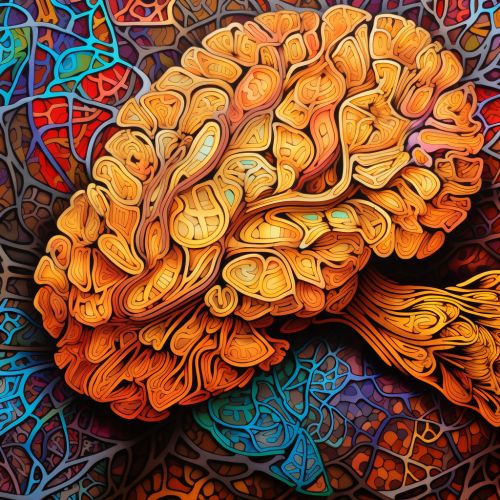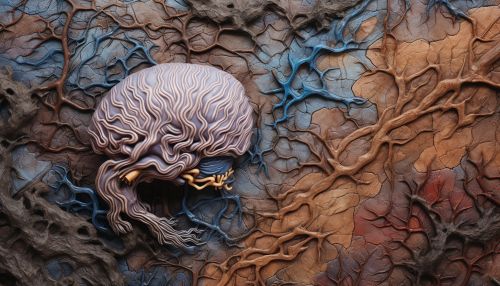Brodmann area 47
Overview
Brodmann area 47 (BA47), also known as the orbital part of the inferior frontal gyrus, is a subdivision of the cerebral cortex located in the frontal lobe. It is named after its discoverer, the German neurologist Korbinian Brodmann, who first defined this area in 1909 based on its unique cytoarchitectonic characteristics. BA47 is involved in various cognitive functions, including language production, semantic processing, and decision making.


Anatomy
BA47 is situated in the ventrolateral prefrontal cortex (VLPFC), on the lateral surface of the frontal lobe. It is bounded dorsally by Brodmann area 45 and medially by Brodmann area 11. It is one of the last areas to mature in the human brain, which may be related to the development of complex cognitive functions.
Cytoarchitecture
Like other Brodmann areas, BA47 is defined by its unique cytoarchitectonic characteristics. It is characterized by a thin layer II, a well-developed layer III with large pyramidal cells, and a relatively cell-free layer IV. The density of cells in layer V is lower than in neighboring areas.
Functions
BA47 plays a crucial role in various cognitive functions. It is involved in language production, particularly in tasks that require semantic processing. It is also implicated in decision making, especially in tasks that require evaluation of reward and risk. Moreover, it is associated with social cognition, including theory of mind and empathy.
Clinical Significance
Abnormalities in BA47 have been associated with various neurological and psychiatric disorders. For example, structural and functional changes in this area have been observed in patients with schizophrenia, autism, and attention deficit hyperactivity disorder (ADHD). Moreover, damage to BA47 can result in language deficits, such as aphasia, and impairments in decision making and social cognition.
Research
Research on BA47 has been conducted using various methods, including neuroimaging techniques such as functional magnetic resonance imaging (fMRI) and positron emission tomography (PET), as well as neuropsychological assessments. These studies have provided valuable insights into the functions and clinical significance of this area.
